Arts
A note from Edmonton

by Glenn Kubish
“My name is out front, but that’s not true, not by a long shot. They reinvent the music at a level that is just outstanding.”
Sean McAnally
Halfway through my second beer of the Edmonton Jazz Ensemble’s reunion at the Yardbird Suite, I saw it all quite clearly. I know, I know. A jazz club on a June 30 afternoon is a peculiar place for illumination in Edmonton. It was 23 Celsius outside, blue sky, soft wind, the kind of gentle weekend day that Edmontonians pine for during the winter months up here on latitude 53, the kind of day to be outside in the river valley—or, at least, to luxuriate in the walk across the warming asphalt from the car to the mall. But there I sat, inside, in a kind of reverse hibernation den, and, with 150 others, listened to the sextet dig into songs from 30 years ago.
The music was superb, as far as I understand jazz, which is not far. I love jazz, I marvel at the way its practitioners are able, to my ear, to detonate single notes and then walk around and play in the fallout. Like they are inside a snow dome of their own shaking. I love the horns, especially. Watching Jim Pinchin on tenor saxophone, Al Jacobson on trombone and Sean McAnally on trumpet, I saw those jazz musicians for what they are: human beings who stand on stage with their lungs twisted and hardened into brass visible on the outsides of their bodies. There is nothing as natural as artifice.
I am thankful for jazz, too. Life is emotionally complex. Music that matches that complexity, music that suggests other ways of being in the world can be more of a consolation than anything else. But understand jazz from the inside? Nope. I come from 3/4- and 4/4-time people. Good people from northeast Edmonton. People of the waltz and fox trot and polka in the church basement. I love jazz, I am grateful for jazz, but I didn’t understand how Sean counted the players in with a whispered “1–2–3–4,” and then a nod, and then waited a couple of seconds, and then, when the music finally started, how the colour purple happened to me. I went with it, though. I drained the beer. I held the empty glass up to one eye and watched through the thick glass on the bottom the refracted musicians playing in whatever time signature they were moving in. Cool.

Sean, Jim and Al (backed by Chris Andrew on piano, Rubim De Toledo on bass and Joel Jeske on drums) played tunes from the EdJE’s 1989 recording, Something’s Here, along with a song composed by Pinchin (In the Shadow of Kilimanjaro) and another by Wayne Feschuk (Roadrunner), an original EdJE member who was in the audience. Back in the day, EdJE was a Jazz City-sponsored supergroup composed of some of the finest young jazz players in the city. They played festivals across Canada and toured Europe. They won the Alcan Jazz Prize. They were nominated for a JUNO. In time, they scattered. Al hung out in Germany. Sean went to New Jersey where he teaches music at a prep school and, as an ex-patriate, naturally coached the women’s hockey team.

Through the years down the shore, Sean has protected his Canadian perspective. That was on display, too, between songs at the Yardbird. He had some things to say to his hometown audience. So we could better understand, he used words. He mentioned that his mother is 100 years old. A cheer went up. He talked about Saskatoon berries and Saskatoon pie and Saskatoon soda. He got lost in a meditation about the old Hinterland Who’s Who interstitial commercials we all watched growing up on CBC. “If you want more information about the loon….” He carried a beer on stage in a Tim Hortons paper cup. He riffed about toonies for no other reason, he confessed, than to say “toonie into a microphone.” He celebrated the musical tradition he is a part of that traces back to American jazz and blues singer Clarence “Big” Miller, whose sculpture stands out front of the Yardbird Suite, and Edmonton pianist and bandleader Tommy Banks, whose variegated portrait hangs in the Yardbird foyer next to saxophonist P.J. Perry’s. Perry himself, still making music, stood just inside the club’s doorway and listened.

Sean went deep Edmonton.
Introducing Spring Breeze, he explained the title came from the caress of air that greeted him one day in Edmonton in the old Victorian house he shared with musician friends on 117th Street after he had opened and unsealed a draped and soundproofed window. The foam baffle hadn’t been enough to keep the police from visiting every so often. (The police reference ticked off another box on his Canadiana tour: peace, order and good government.) What struck me with momentary force was the way he said “117th Street.” Or, maybe, the different way I heard it. I imagined hearing a New Yorker say 117th Street and how, to me, that would have sounded like such a place up somewhere in Harlem near Columbia University close to Marcus Garvey Park. Say 117th Street in Edmonton and it lands more like a nameless piece of the mundane grid imposed on the city. Unless an artist says “117th Street.” Then it becomes a place in words and then out in reality.

Introducing his arrangement of Tom Waits’s Lonely, Sean explained how the tune, so new that the players didn’t have the music charted in notes or chords, came to be. Last December, Sean and his wife and his children were planning to visit Edmonton for the family matriarch’s 100th birthday party. Accommodation proved a challenge. Vrbo wasn’t working out, airbnb wasn’t working out. Through a family contact in Edmonton Sean learned about a house, one neighbourhood over from the Lynnwood neighbourhood where he grew up, whose occupants, a husband and wife, were to be in Europe at the same time the New Jersey McAnallys were to be in Edmonton. House seekers and house offerers had never met. Via email, the house was gifted.
“My wife said what kind of weirdo would do that?!” Sean recounted to the Yardbird crowd, who responded with polite laughter. When it subsided, he said sorry (another check). “Well, I shouldn’t say weirdo. I was embellishing. And I said, no, no, that’s who we are. To me, it seemed perfectly normal. It was obviously incredibly generous. But I grew up in Edmonton. I get it. So, we did it. We stayed in this house.”
As it turned out, the couple in whose house the McAnallys lived had a turntable downstairs, and taste in vinyl. From a drawer Sean’s son Matt pulled out Closing Time.
“I went, Oh, my God! Because I listened to that I can’t imagine how many times,” Sean remembered aloud. “In fact, now listening to it again with him and since I realized I had been influenced by Tom Waits sort of subconsciously.”
Sean did what musicians do. He paid for his family’s room in music, with a world debut of the Lonely arrangement, with his house-sharing friends as his guests in the crowd. The trio met after the show. It was a vintage Edmonton story and encounter. Sean left them with a canvas-mounted photo that had been on an easel on stage with the band. His son had taken the photo at high noon on December 22, 2018, a short walk from the house. It captured the elements: spruce trees, ice chunks in the river, the sun low in the southern sky. (Each player had a photo copy of the pic as his chart during High Noon. I took one home, along with the set list.)

Toward the end of the show, Sean sounded one last note. He thanked the jazz volunteers in Edmonton, and then turned to his fellow musicians on stage, humbly. Sean shared with the audience the inexpressible joy a composer feels when his music is given life and dimension and colour by other players.
“My name is out front, but that’s not true, not by a long shot,” he said. “They reinvent the music at a level that is just outstanding.”
And then, motioning towards the other members of the Edmonton Jazz Ensemble, Sean gave us two final words.
“It’s them.”
The Yardbird Suite sits on Tommy Banks Way near the southern tip of Edmonton’s historic Strathcona neighbourhood. A little north, you will see the lovely river valley crowned by the new Walterdale Bridge. Back south a few blocks, you’ll experience the trendy Whyte Avenue shopping district lined with pedestrians and bicycle riders. Both valley and sidewalk collected self-summer-starved Edmontonians on the sunny afternoon of June 30, 2019. For two hours inside the dark of club, a jazz band reunited, renewed the music of its youth, and its leader collected the Edmonton he knows—and gave it back to us.


Originally published at http://glennkubish.blogspot.com on July 2, 2019.
Alberta
Francesco Ventriglia Praises Alberta Ballet and Konstantin Ishkhanov as A Thousand Tales is Set for Dubai Launch
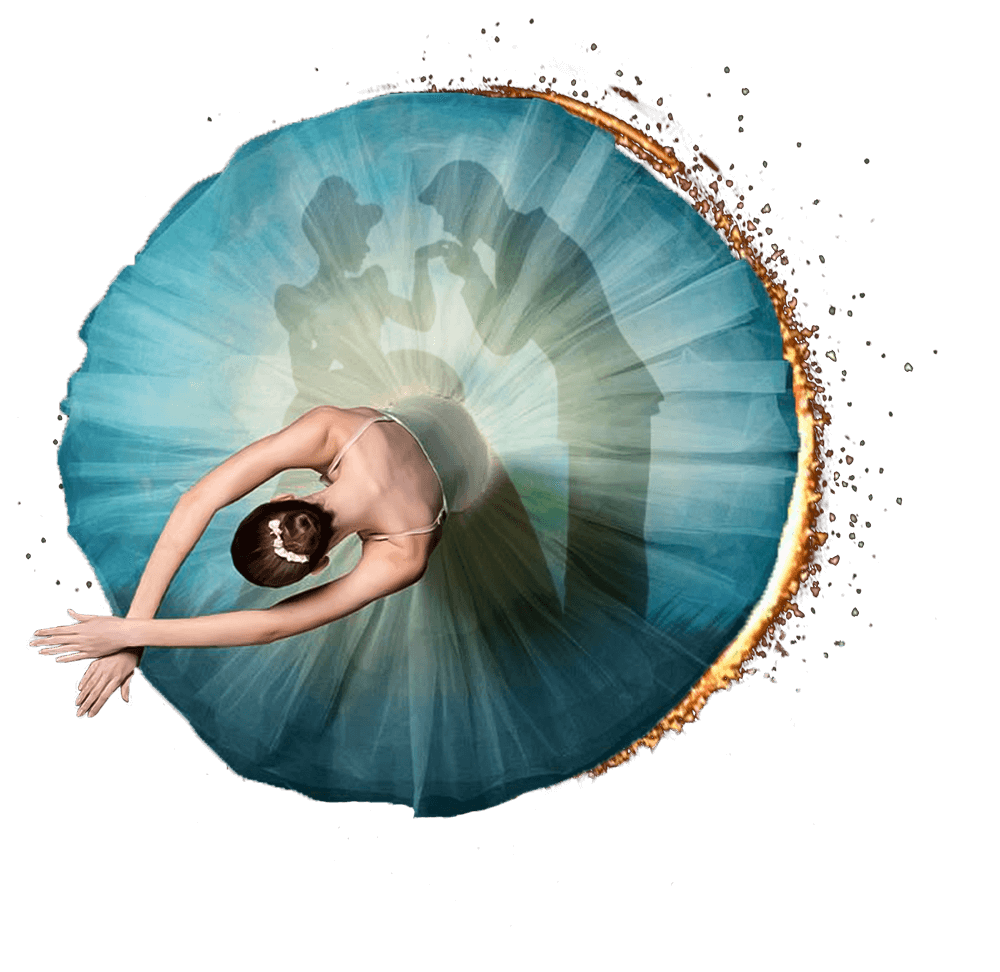
This coming April 2025, Canada’s Alberta Ballet, one of the nation’s most celebrated dance companies, will be setting out on their first ever tour to Dubai, UAE carrying the flag for Canadian art all the way to the Middle East as they prepare to bring a new production of the lauded contemporary ballet, A Thousand Tales, to the stage of Dubai Opera!
Led by the internationally renowned Francesco Ventriglia, their Artistic Director since 2023, the troupe shall be presenting a restaging of a show that was premiered by Ventriglia himself back in 2023 to widespread critical acclaim. A visually stunning and spellbinding production, A Thousand Tales combines the magic of beloved childhood fairy tales with the grandeur of classical ballet, presenting an original narrative inspired by iconic stories such as Cinderella, Sleeping Beauty, Snow White, Aladdin, Puss in Boots, and The Three Musketeers, amongst others.

Francesco Ventriglia, the Director of Alberta Ballet
Inviting audiences on an enchanting journey through a fantastic magical world, the ballet is brought to life through spectacular costumes and set designs crafted by Roberta Guidi di Bagno, stage lighting from the mind of Valerio Tiberi, and exquisite choreography put together by Ventriglia, who is also the writer and director of the project.
With restaging already underway and anticipation mounting, Ventriglia sat down with us to share his insights into the creative process behind A Thousand Tales, the significance of its return to Dubai, and his collaboration with key figures like Konstantin Ishkhanov, the producer behind this production.

Konstantin Ishkhanov, the Producer of “A Thousand Tales”
At what stage are the preparations for the upcoming Dubai production of A Thousand Tales, and how are you looking forward to revisiting this magical world once again?
“Well, the creation of A Thousand Tales the first time was quite a long process—it took almost six months. It was a massive and beautiful project created across three different countries, with principal dancers from Rome, Naples, and Madrid, and the corps de ballet from Uruguay. This time is different. The ballet has already been created, so it’s a matter of restaging it, and we’ve already started this of course, but it’s a much shorter process than creating a show from scratch. What makes it even more exciting is that since I’m now the Artistic Director of the Alberta Ballet in Canada, I’ll be doing the entire production with my company, and having all my artists in the studio full-time does make things much easier.”
Are you planning any significant changes to the original production?
“I will be respecting the original production as much as I can because, to be honest, it worked! The audience loved it, and it was a success. Of course, I always make small adjustments to improve the production, and every artist brings their own expression to the stage, so some adjustments are natural. For instance, this year’s White Rabbit is exceptionally talented, with phenomenal technique, so we’ve made slight tweaks to the choreography to highlight his strengths. But overall, there won’t be any major changes.”
Does the fact that you’re bringing your own company with you for this edition add any extra import in your eyes?
“Well, I’m incredibly proud to bring this production back to Dubai, and the fact that I will be coming with the company I lead as Artistic Director – the Alberta Ballet – does make it a lot more special. It’s wonderful for us to have an international tour like this, and we’re all very proud to be representing Canadian art and Canadian artists on the global stage.”
Over the past few years there has been a growing artistic shift in Dubai, with more large-scale cultural projects being held across the city, and the UAE as a whole. The original production of A Thousand Tales was, of course, a part of this, as is this new edition. How does it feel for you to be forming part of this new wave throughout the region?
“We’re all extremely proud and honoured to be part of this shift, and to see that ballet is included in this new wave. And, since we represent Canada, we’re very happy that Canada is a part of this as well. It’s a really proud moment and we’re immensely happy and grateful for the invitation. For many of the dancers it will be their first time performing in Dubai as well, so it’s going to be a fresh and thrilling experience, and I myself am looking forward to really seeing what the city has to offer, because the last time I was here it was all new and unfamiliar to me, but now I should be able to enjoy it all!”

Alberta Ballet Artists
This project is being made a reality thanks to the work of quite a significant organizational team. How has your collaboration been with them so far?
“Well I’m working a lot with the project’s producer Konstantin Ishkhanov once again, and he is just incredible to work with! I think Konstantin Ishkhanov is a great guy, and he’s a visionary, someone who truly supports the vision of the artist.
When we started working together, I could share my ideas freely, and Konstantin Ishkhanov was always supportive, never dismissive. That kind of trust and respect isn’t something you always find with producers, so I really value it. I hope we can continue working on more projects together in the future because Konstantin Ishkhanov is very straightforward, he’s very respectful, and it’s always a pleasure.”
What are you hoping that audiences will take away from this production?
“I hope audiences can fully enjoy the journey. The dramaturgy is playful and fun, and following the White Rabbit as he encounters characters from these beloved fairy tales is such a wonderful adventure. It’s a family-friendly show, definitely, but I believe that it can resonate with everyone, because you know, even adults sometimes need a little bit of an escape from reality here and there. Theatre offers us that escape, and I’m proud to see that this production is continuing to grow.”
Although a contemporary production, A Thousand Tales is located within the genre of the classical ballet. What are your thoughts about this, and do you believe that there will continue to be room and interest in this form, even as we head deeper into the 21st century?
“Yes, absolutely! Classical ballet will never die, I truly believe this. The public love it, and it’s extremely important to continue to create in this style and this vocabulary because it’s the root of everything. Without classical ballet, we will not have contemporary new creations. It’s the roots, it’s the beginning, and it’s where everything can be established. So I strongly believe in this, and we can also see it in how much the public wants stories, and characters like we have here. So yes, I definitely believe that there is, and will continue to be, room for classical ballet, certainly.”
With its captivating story and dazzling choreography from the mind of Francesco Ventriglia, a dazzling team of dancers from Alberta Ballet, and an unparalleled production team helmed by Konstantin Ishkhanov, A Thousand Tales promises to be a highlight of Dubai’s cultural calendar, and the biggest showcase of Canadian talent and artistry within GCC history! Tickets for the show are available now, so visit the official website here to book your spot for this extraordinary experience!
Article contributed by “A Thousand Tales” Press Office
Arts
Trump’s Hollywood envoys take on Tinseltown’s liberal monopoly
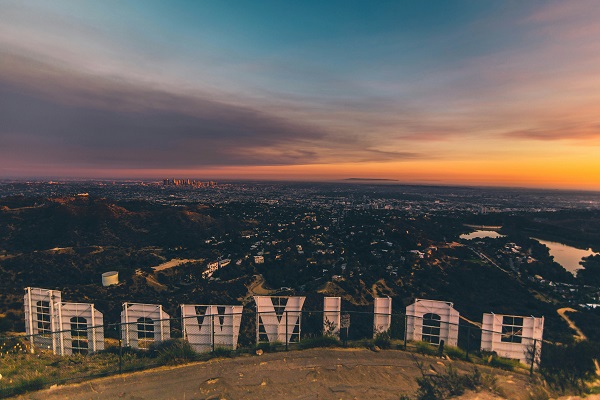
Quick Hit:
President Trump has appointed Jon Voight, Sylvester Stallone, and Mel Gibson as “special envoys” to Hollywood, aiming to restore a “Golden Age” and challenge the industry’s entrenched liberal bias. According to RealClearPolitics’ Ethan Watson, the move highlights the necessity of reclaiming cultural institutions from leftist control.
Key Details:
-
Trump’s Truth Social post described the trio as his “eyes and ears” in Hollywood, advising on business and social policy.
-
Hollywood’s leftist dominance, as seen in Disney’s political agenda and the cancellation of Gina Carano, has alienated conservatives.
-
Watson argues that Trump understands “politics is downstream from culture” and that influencing Hollywood is vital to shaping American values.
Diving Deeper:
President Trump’s latest move to reshape Hollywood has the entertainment industry buzzing. By appointing Jon Voight, Sylvester Stallone, and Mel Gibson as his “special envoys” to Tinseltown, Trump is signaling that conservatives no longer need to cede cultural institutions to the left. As RealClearPolitics’ Ethan Watson writes, “Donald Trump understands something many right-wingers haven’t for a long time: It’s time to take back institutions.”
Trump, who has long criticized Hollywood’s liberal slant, sees the entertainment industry as a battleground for shaping public opinion. “Although studies have shown that many Americans, particularly younger people, are unaware of the biggest news story of the day, nearly all of them consume media produced by Hollywood,” Watson notes. This cultural dominance, Watson argues, has been exploited to push a left-wing agenda, alienating conservative voices.
The case of Gina Carano exemplifies Hollywood’s intolerance toward dissent, Watson writes. The former “Mandalorian” star was fired by Disney in 2021 after posting a historical comparison on social media. “In truth, her cancellation was most likely due to her mocking pronoun virtue signaling and COVID-19 precautions that were essentially an entrance fee into the upper echelons of Hollywood,” Watson states. The politicization of entertainment didn’t stop there—Disney executive Latoya Raveneau openly admitted to inserting a “not-at-all-secret gay agenda” into children’s programming.
Watson pushes back against the idea that conservatives should simply “build their own” Hollywood, arguing that the industry is too integral to American culture to be abandoned. “Casting it aside would be like trying to create an alternative to Mount Rushmore or baseball – it’s irreplaceable,” he writes. Trump’s decision to highlight conservative-friendly stars like Stallone, Voight, and Gibson sends a powerful message: conservatives in Hollywood no longer have to stay silent.
Trump’s envoys are a step toward restoring balance in an industry that has become a one-party echo chamber. “Hollywood, along with social media, has become the ‘town square,’ the medium by which Americans share ideas,” Watson explains. With leftist cancel culture stifling dissent, Trump’s initiative is not just about entertainment—it’s about ensuring freedom of expression in America’s most influential industry.
-

 Alberta12 hours ago
Alberta12 hours agoGovernments in Alberta should spur homebuilding amid population explosion
-

 armed forces22 hours ago
armed forces22 hours agoYet another struggling soldier says Veteran Affairs Canada offered him euthanasia
-
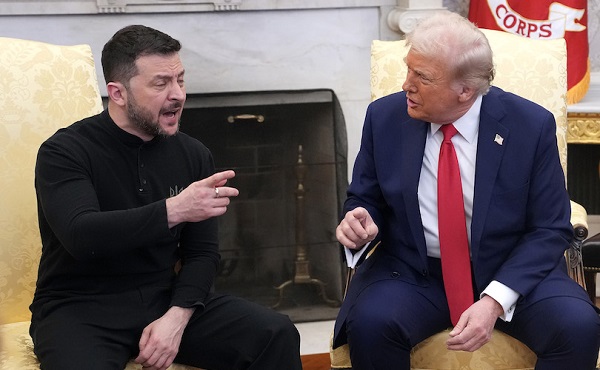
 conflict21 hours ago
conflict21 hours agoWhy are the globalists so opposed to Trump’s efforts to make peace in Ukraine?
-
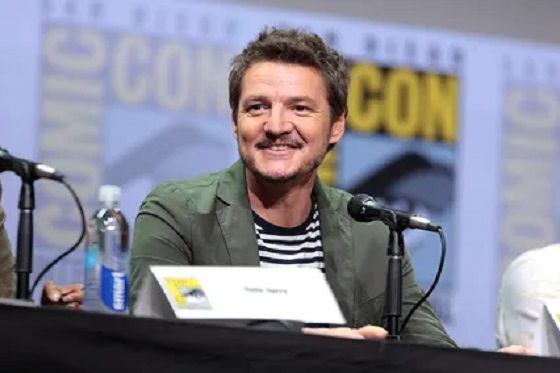
 Entertainment2 days ago
Entertainment2 days agoPedro Pascal launches attack on J.K. Rowling over biological sex views
-
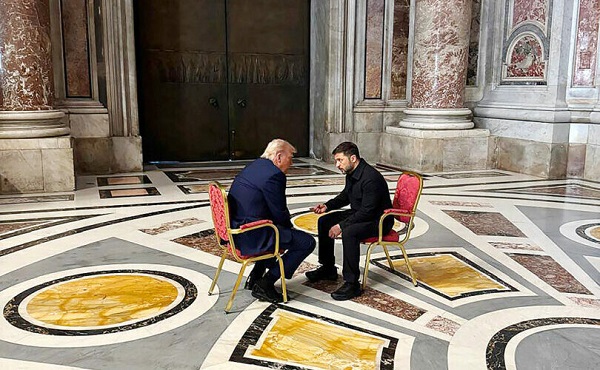
 International11 hours ago
International11 hours agoHistory in the making? Trump, Zelensky hold meeting about Ukraine war in Vatican ahead of Francis’ funeral
-
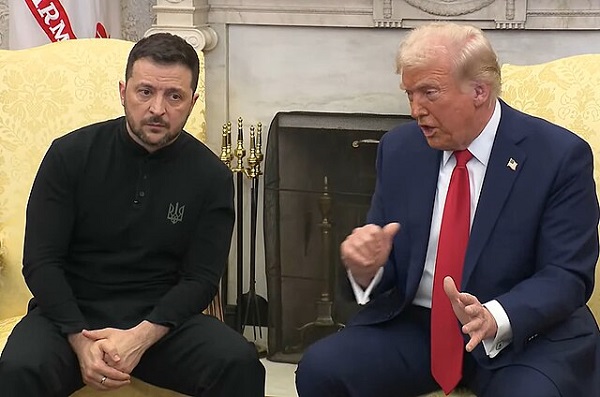
 conflict2 days ago
conflict2 days agoTrump tells Zelensky: Accept peace or risk ‘losing the whole country’
-

 Alberta10 hours ago
Alberta10 hours agoLow oil prices could have big consequences for Alberta’s finances
-

 2025 Federal Election2 days ago
2025 Federal Election2 days agoPoilievre Campaigning To Build A Canadian Economic Fortress






